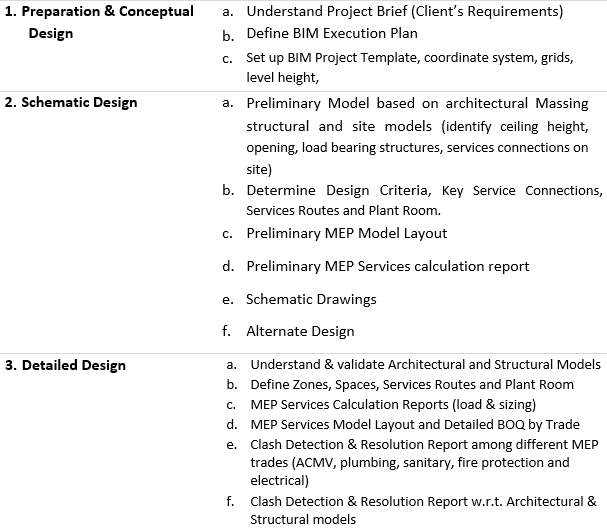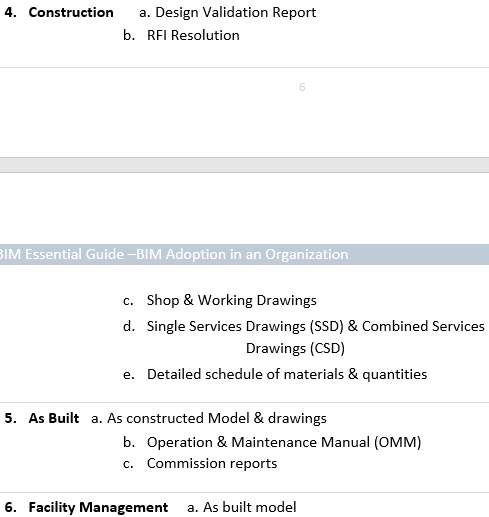Reflective Essay on Building Information Modeling
| ✅ Paper Type: Free Essay | ✅ Subject: Construction |
| ✅ Wordcount: 1733 words | ✅ Published: 18 May 2020 |
Introduction
Building Information Modelling (BIM) has been defined in different ways by several scholars. However, as earlier mentioned in my project, the process through which information is managed and created across the project lifecycle, on particular construction activity, is what is referred to as BIM. In this case, any information or aspect to be included in construction activity is represented digitally. By inculcating BIM in construction projects, those interacting with the project ensure that they reach the required standards and optimize their actions. Again, others refer to BIM as software that combines intelligent 3D and 2D in an attempt to come up with sophisticated designs. Further, all the individuals participating in a given project life cycle are involved BIM. Thus, engineers, architects, owners, contractors, among other people, are part and parcel of the model in our context. In BIM, non-graphical data and parametrically-defined graphical objects are used that enable contractors, MEP engineers, and prevalent architects show the relationship between the building elements and geometric representation (Race et al., pg. 57, 2019). Scholars say that BIM brings about simplicity in construction by improving the so-called visualization. Many organizations have adopted BIM in their construction projects. Consequently, they have been able to come with wonderful buildings. For instance, in the UK, the Model has improved value, reduced the conflicts in construction projects, and fostered productivity. The following diagram signifies BIM, which virtually represents all the aspects of the construction project. In this paper, I will seek to portray my duties as a construction manager, the challenges I face and how they can be resolved using BIM, limitations of the model and finally present evidence that can convince my organization that BIM needs to be incorporated in our projects.

Figure 1: A Diagram Showing Building Information Model
My Duties as a Construction Manager
As a construction manager, I am entitled to several responsibilities. First and foremost, I plan for various tasks of my team as well as mine (Dziekoński, pg. 177, 2017). In that context, I prepare the work for the whole team, estimate the costs, and develop the roadmaps for the construction teams. Again, I have to review projects and determine whether they have been executed in accordance with stipulated guidelines.
In construction sites, I am also the boss and, therefore, hiring, supervising and firing of incompetence and infective workers is my duty. Another duty that construction managers are entrusted with is setting of goals. The clients have to sign the goals, and I make sure the construction team meets those goals. The goals also portray the supplies needed alongside the number of workers. As a construction manager, I have to review the goals more often to make sure that they are adhered to. Another essential role played by construction managers is risk management (Arditi & Alavipour, 2019). However, it is not easy to manage risks in construction projects. As a way of helping construction managers in this, software helpers have been designed. However, there should be a mutual agreement where the client is notified of possible risks. Besides, I draft contracts and write down all that is to be done. When it comes to the management of disputes, I resolve several conflicts emanating in construction between third parties, clients as well as workers. Last but least, I always ensure that I stay on budget when planning for the projects. However, apart from these roles, there exist other responsibilities that are entitled to construction managers.
Challenges I face as a Construction Manager
To commence with, confronting my workers and question them on their performance has always been a challenge (Daniel & Daniel, pg. 191, 2018). Again, when it comes to hiring candidates, I have always been at crossroads as I am afraid of ending up choosing the wrong party. Further, team conflicts have been inevitable in construction sites. This, in return, interferes with collaboration and good work relations. Management of time is another area I face difficulties bearing in mind that construction projects are complicated (Weil, pg. 67, 2018). As a result, many duties are left unattended at the end of the day.
Moreover, when executing projects, many are the times I comes to discover that the costs exceed the allocated funds (Ogunde et al., pg. 9, 2017) For example, a task that requires 800 dollars may end up costing me 1000 dollars instead. Lastly, the quality of our projects has always been questionable. Several clients have commented that our construction projects do not meet their expectations. I have tried all my best to hire the very best teams but all in vain. However, I am convinced that the Building Information Model will help settle some of these problems.
Specific Aspect that Revamped by BIM and Its Benefits
As portrayed in my earlier project, BIM is attached to enhancing efficiency in project lifecycle alongside other benefits (Whitlock et al., pg. 47, 2018). Again, in the project, it was mentioned that construction is a complicated undertaking, and BIM enables visualization and, thus, value the clients need is attained. Apart from this primary benefit, there subsist other advantages that are linked with the model.
For instance, BIM is said to reduce reworking (Chan et al., page 100764, 2019). In this case, it cuts down changes in the project and re-keying information into models. Again, the BIM embraces improved expertise (digital technology), which results in high productivity compared to the other models. As stated in my project, BIM aid in reducing conflicts prevalent in construction sites. Bearing in mind that our organization is faced with conflicts, especially among the work teams, incorporating BIM will mitigate such problems.
Apart from the above benefits, BIM plays a significant role in reducing the costs of construction projects (Race et al., pg. 45, 2019). In this case, the so-called clash detection which portrays the parts occupying the same space in design aids in eliminating the need for changes. The changes are subject to additional charges. Additionally, the cost of building can be estimated using the Building Information Model. Consequently, those in charge of the project can then prepare enough funds for the project. Last but not least, BIM encourages flexibility in construction and, thus, changes in design can be made at any time. Therefore, my organization needs to adopt BIM if it aspires to attain its operational goals.
Barriers in Implementation of BIM
There subsist several challenges that interfere with the implementation of BIM. The first problem is software costs and training (Tan et al., pg. 953, 2019). In this case, licensing and purchasing of BIM software requires huge sums. In other words, it is costly. Again, for one to use BIM, he or she needs to undergo extensive training. Further, BIM entails a lot of work. In that context, it requires construction managers and prime contractors to sit down and draft a collaborative model that suits a particular project.
Another problem with BIM is legal based problems (Sardroud et al., pg. 7, 2018). So far, the legal ramifications attached to using the software in our context continue to be unknown. Furthermore, there exist very few experts who can handle BIM (Ahmed, pg. 112, 2018). As a result, once the software is purchased, an organization will have to invest in education and training. However, bearing in mind that BIM is a new approach in the construction field, these are the only challenges that have been so far noted.
Evidence to Persuade My Organization
Many studies show beyond reasonable doubts that BIM is beneficial. For instance, architects who have used the model report that they attain the needed standards. However, for efficacy in construction, Building, and Construction Authority (BCA) has come up with stages that ought to be followed. The following diagram shows the steps recommended by the above body.


Figure 2. Steps that render BIM successful
The CEO of Building and Construction has made it clear that BIM has transformed the construction industry. The CEO in the BIM guide that was published in August 2013 urged construction organization to embrace BIM technology (Olawumi & Chan, pg. 1220, 2019). So far, contractors, architects, and owners who have employed BIM have testified that the model is productive in several ways. Therefore, I urge my organization to embrace BIM and reap maximum benefits from the model.
Conclusion
In brief, we are living in a world of ever-changing expertise. In this case, only those organizations that utilize improved technology are competitive. BIM is one example of new technology that every construction company should adopt. Therefore, if my organization uses BIM in its construction operations, it will enjoy overwhelming benefits, as shown above, and become competitive.
List of References
- Ahmed, S., 2018. Barriers to implementation of building information modeling (BIM) to the construction industry: a review. Journal of Civil Engineering and Construction, 7(2), pp.107-113.
- Arditi, D., Alavipour, S.R. and Committee on Management Practices in Construction (ASCE Construction Institute), 2019. Trends in Expectations about Duties and Responsibilities of Construction Managers. Journal of Construction Engineering and Management, 145(7), p.04019037.
- Chan, D.W., Olawumi, T.O., and Ho, A.M., 2019. Perceived benefits of and barriers to Building Information Modelling (BIM) implementation in construction: The case of Hong Kong. Journal of Building Engineering, 25, p.100764.
- Daniel, P.A., and Daniel, C., 2018. Complexity, uncertainty, and mental models: From a paradigm of regulation to a paradigm of emergence in project management. International journal of project management, 36(1), pp.184-197.
- Dziekoński, K., 2017. Project managers’ competencies model for the construction industry in Poland. Procedia Engineering, 182, pp.174-181.
- Ogunde, A., Olaolu, O., Afolabi, A.O., Owolabi, J., and Ojelabi, R.A., 2017. Challenges confronting construction project management system for sustainable construction in developing countries: Professionals perspectives (a case study of Nigeria). Journal of Building Performance, 8(1), pp.1-11.
- Olawumi, T.O., and Chan, D.W., 2019. Development of a benchmarking model for BIM implementation in developing countries. Benchmarking: An International Journal, 26(4), pp.1210-1232.
- Race, S., 2019. BIM demystified. Routledge.
- Sardroud, J.M., Mehdizadehtavasani, M., Khorramabadi, A., and Ranjbardar, A., 2018. Barriers Analysis to Effective Implementation of BIM in the Construction Industry. In ISARC. Proceedings of the International Symposium on Automation and Robotics in Construction (Vol. 35, pp. 1-8). IAARC Publications.
- Tan, T., Chen, K., Xue, F., and Lu, W., 2019. Barriers to Building Information Modeling (BIM) implementation in China’s prefabricated construction: An interpretive structural modeling (ISM) approach. Journal of Cleaner Production, 219, pp.949-959.
- Weil, D., 2018. A green industrial relations system for construction: Challenges and opportunities. Members-only Library.
- Whitlock, K., Abanda, F.H., Manjia, M.B., Pettang, C., and Nkeng, G.E., 2018. BIM for Construction Site Logistics Management. Journal of Engineering, Project, and Production Management, 8(1), p.47.
Cite This Work
To export a reference to this article please select a referencing stye below:
Related Services
View allDMCA / Removal Request
If you are the original writer of this essay and no longer wish to have your work published on UKEssays.com then please click the following link to email our support team:
Request essay removal



